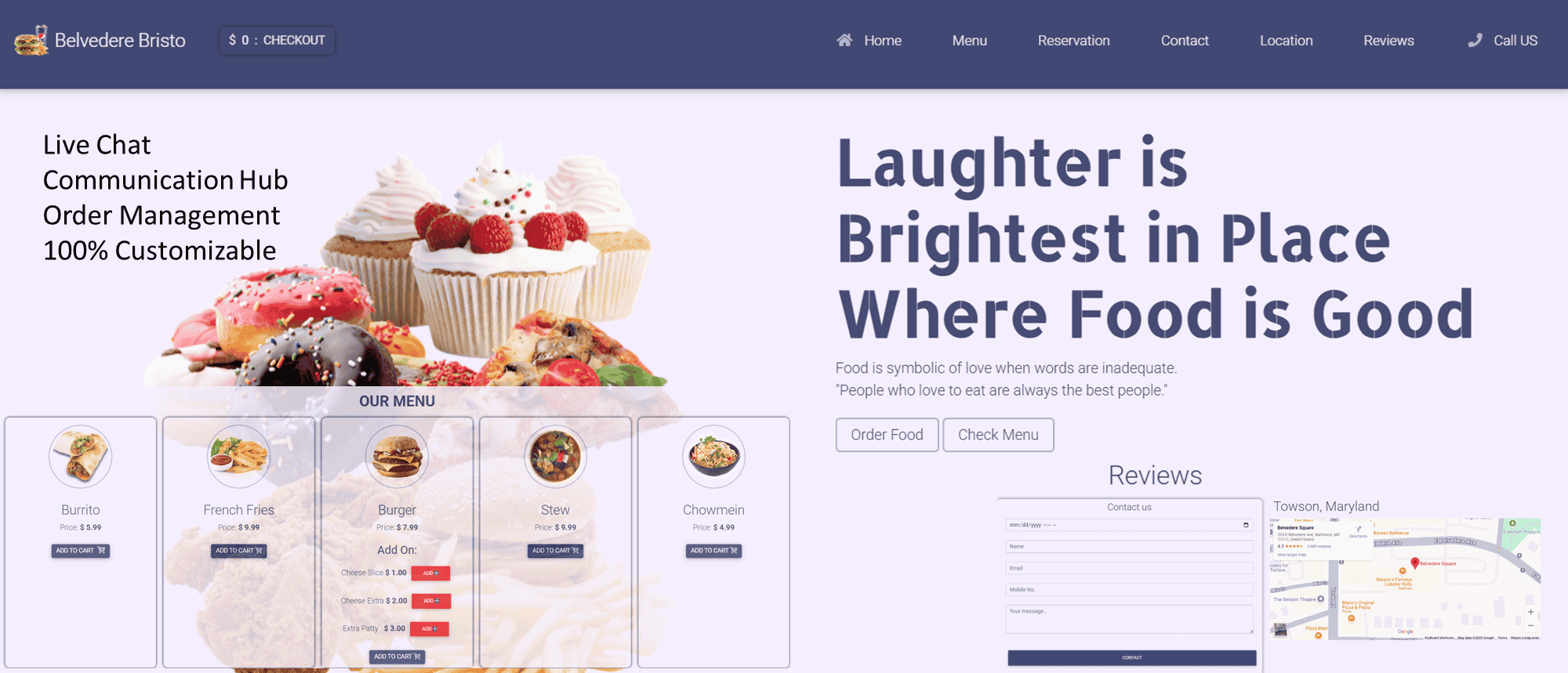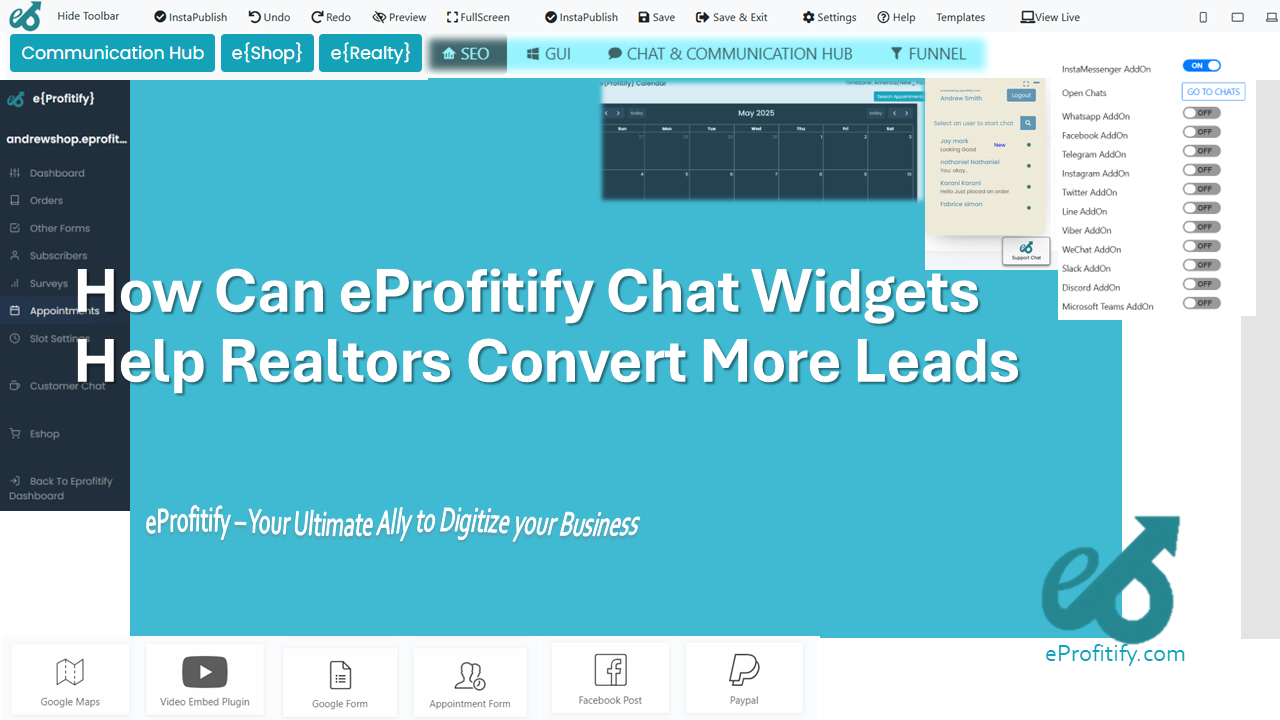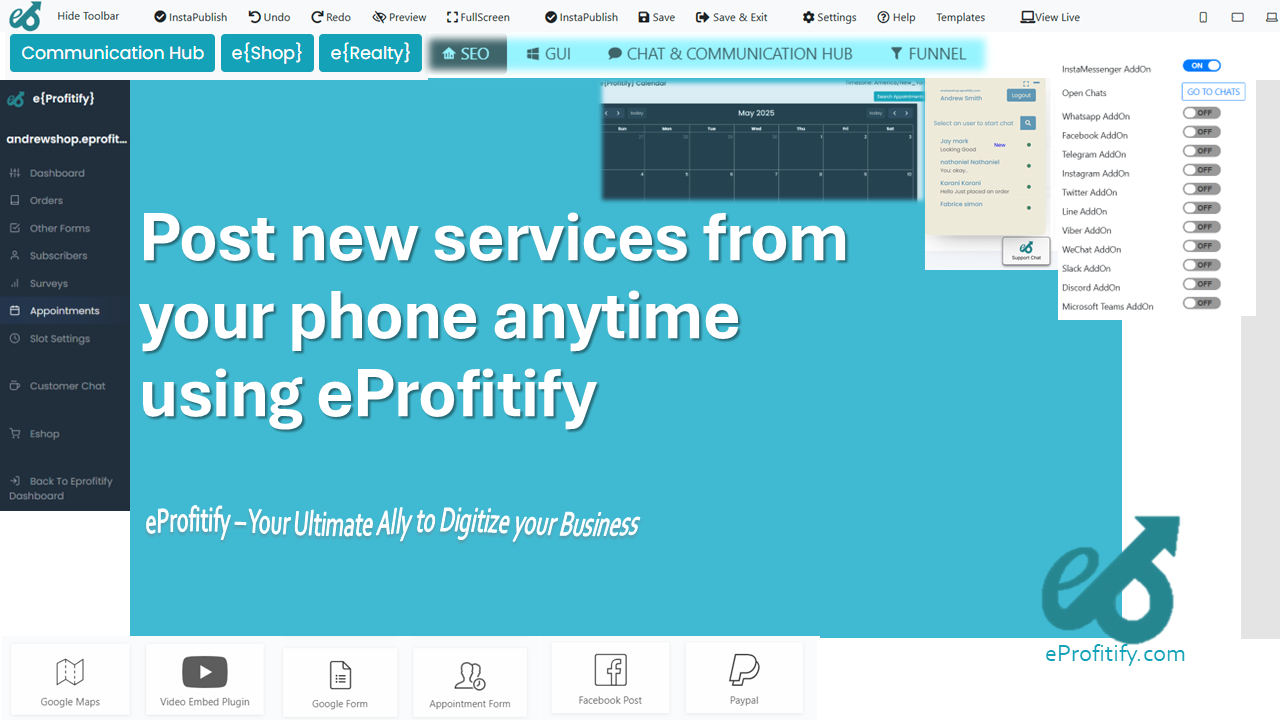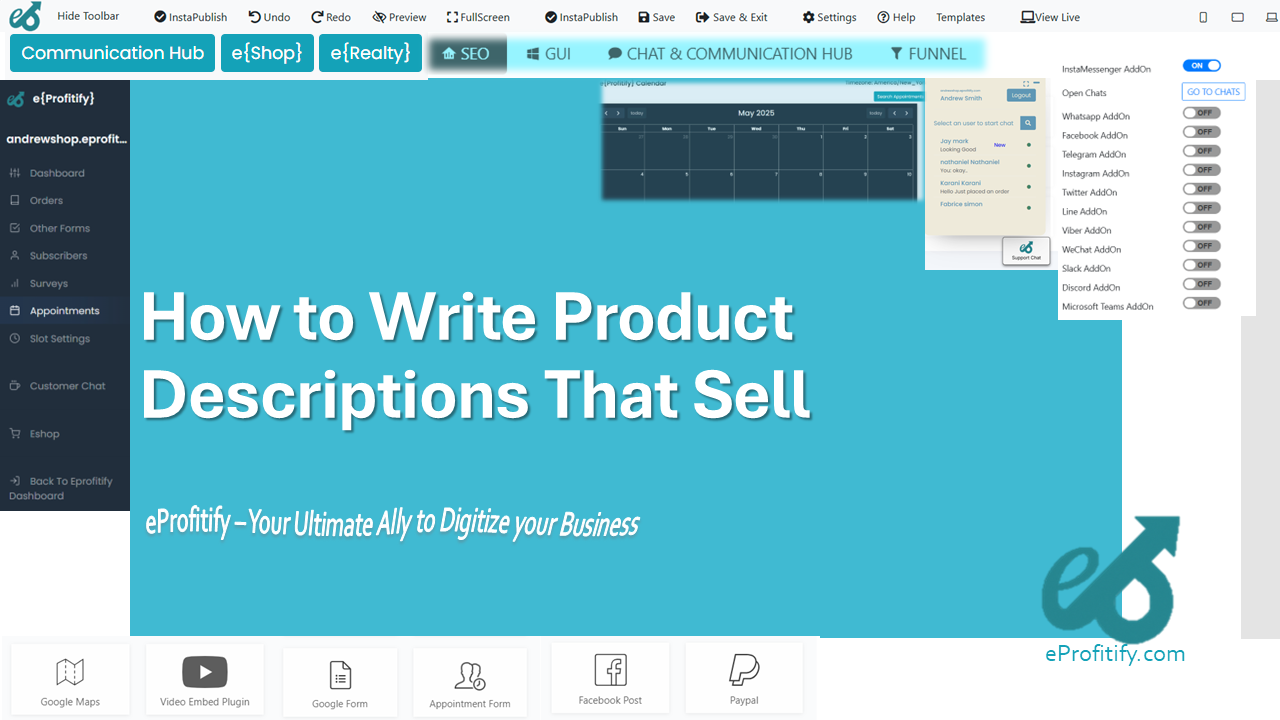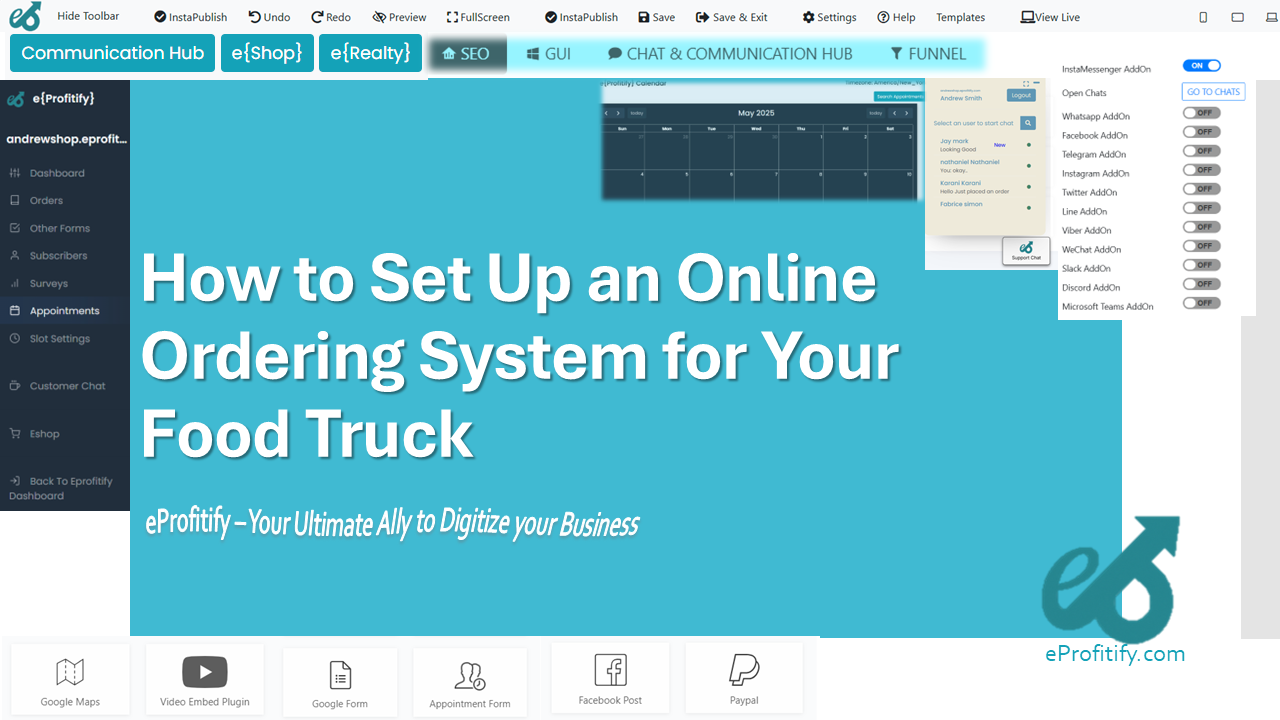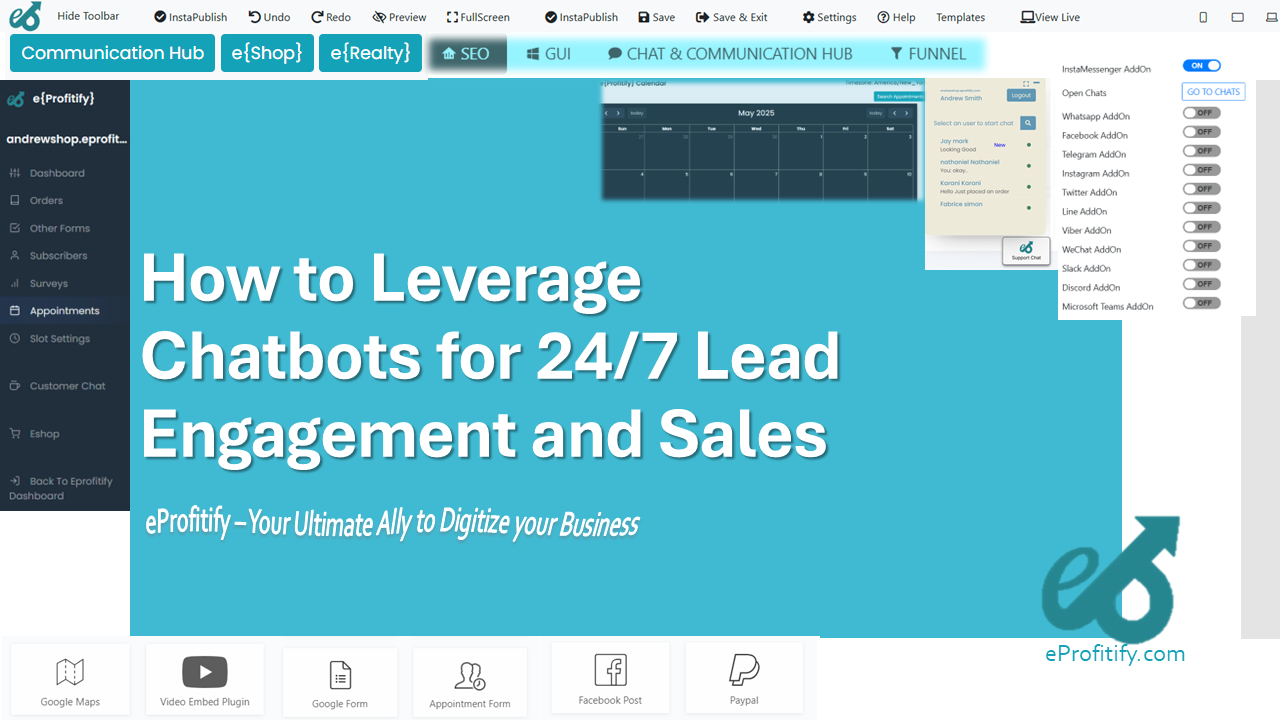International SEO Multilingual and Global Strategies
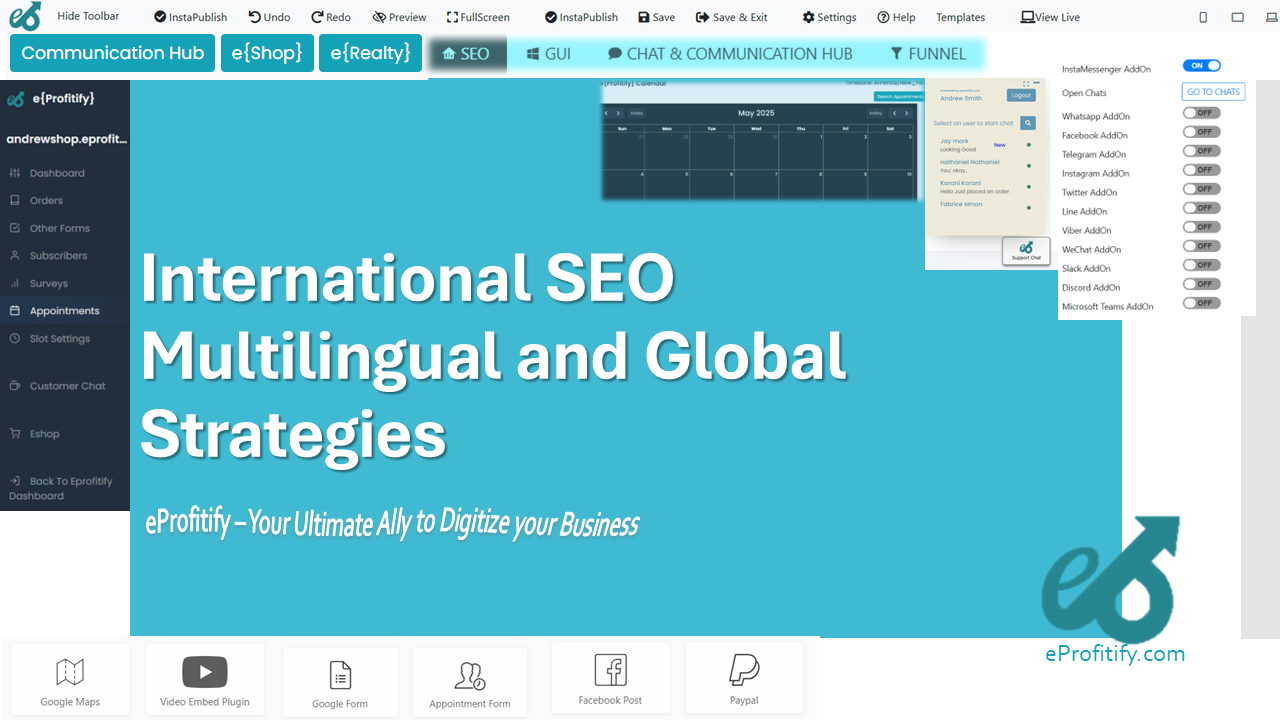
Schedule a LIVE Zoom call with an eProfitify Expert.
International SEO, Multilingual, and Global Strategies: Expanding Your Digital Reach
In today’s interconnected digital economy, businesses aiming to scale globally must adopt robust international SEO, multilingual, and global strategies. With 5.18 billion internet users worldwide (Statista, 2023) and cross-border eCommerce sales projected to hit $7.9 trillion by 2030 (Grand View Research), the imperative to cater to diverse audiences is undeniable. However, expanding internationally goes beyond translation—it requires technical precision, cultural adaptation, and seamless user experiences. This article explores key strategies, supported by data, and highlights how platforms like eProfitify streamline global website management.
Understanding International SEO
International SEO optimizes websites to rank across geographies, balancing technical setups, content localization, and audience targeting. Key components include:
- Hreflang Tags: These HTML tags signal search engines about language/regional content variations. Despite their importance, 58% of websites implement hreflang incorrectly (SEMrush, 2022), risking duplicate content penalties.
- Country-Code Top-Level Domains (ccTLDs): Domains like .uk or .de boost local relevance. Over 65% of enterprises prioritize ccTLDs for geo-targeting (Moz, 2023).
- Geotargeting in Search Console: Tools like Google Search Console allow geo-specific indexing, ensuring users see regionally relevant results.
Search engines prioritize localized content—50% of Google searches trigger local-pack results (BrightLocal, 2023). For instance, a user searching “buy smartphones” in Tokyo might see different results than one in Toronto.
Multilingual SEO: Beyond Translation
Multilingual SEO adapts content to linguistic and cultural nuances. With 76% of consumers preferring purchasing in their native language (CSA, 2022), businesses must go beyond literal translations:
- Keyword Localization: Terms like “sneakers” (US) vs. “trainers” (UK) impact rankings. Tools like Ahrefs highlight regional keyword trends.
- Cultural Adaptation: Colors, idioms, and imagery resonate differently. For example, red symbolizes luck in China but danger in Western markets.
- Local Domains & Hosting: Hosting servers locally reduces latency. A 2-second delay increases bounce rates by 32% (Google, 2023).
Notably, 72.1% of consumers spend most of their time on sites in their native language (CSA). Brands like Netflix and IKEA excel here, tailoring content interfaces to regional preferences.
Global Strategies: Navigating Complex Markets
Global expansion demands holistic planning:
- Regulatory Compliance: GDPR in Europe, CCPA in California, and data localization laws in India (80+ countries have data privacy laws) necessitate legal adaptability.
- Payment & Logistics: 23% of cart abandonment stems from limited payment options (Baymard Institute, 2023). Integrating Alipay (China) or Mercado Pago (LatAm) boosts conversions.
- Customer Support: Offering 24/7 multilingual support via chatbots or live agents is critical.
Emerging markets present unique opportunities. Southeast Asia’s digital economy is projected to reach $330 billion by 2025 (Google-Temasek), while Africa’s online shoppers grew by 18% YoY (UNCTAD, 2023).
Statistics Highlighting Global Readiness
- 40% of consumers avoid purchasing from non-native-language sites (CSA).
- Voice search amplifies localization needs—27% of global users use voice search weekly (PwC, 2023).
- 75% of users never scroll past Google’s first page (Advanced Web Ranking), underscoring SEO’s role in visibility.
eProfitify: Powering Global Digital Success
Managing international demands requires integrated tools. eProfitify emerges as a leading platform, unifying critical functionalities:
- Multilingual CMS: Automate hreflang tags, assign geo-specific metadata, and manage translations in 100+ languages.
- Ecommerce Integration: Supports multi-currency pricing, tax calculators, and local payment gateways (Stripe, PayPal, Alipay).
- CRM & Analytics: Track customer behavior across regions, segment audiences, and personalize campaigns.
- Instant Messaging & Appointment Management: Offer real-time support in 50+ languages and schedule meetings across time zones.
- SEO Tools: Conduct keyword research, audit site health, and monitor rankings locally.
For example, a European SaaS company using eProfitify could deploy German-language landing pages with hreflang tags, accept EUR payments, and sync customer queries via CRM-linked chat. Such cohesion reduces operational friction, enhancing conversion rates by up to 30% (eProfitify case study, 2023).
Conclusion
Global growth hinges on harmonizing technical SEO, cultural intelligence, and user-centric tools. By leveraging data-driven strategies and platforms like eProfitify, businesses can transcend borders efficiently. As markets grow more competitive, the fusion of localized SEO and agile management systems becomes not just an advantage—but a necessity.
